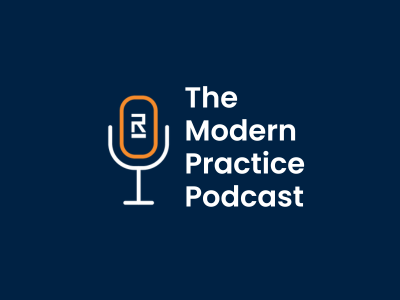Maintaining compliance with Occupational Safety and Health Administration (OSHA) regulations is crucial for any dental practice. Keeping employees and partners safe from being exposed to hazardous materials isn’t something that anyone can take lightly—not doctors, nurses, assistants or office staff.
During the AADOM 2023 Annual Conference in Orlando, attendees received a crash course on OSHA compliance from Tija Hunter, CDA, instructor at the Dental Careers Institute and author of the book, “Rock Star Dental Assistant.”
How Safety Practices Have Changed
As a dental assistant with over four decades of experience, Hunter began by explaining how different employee safety was when she started her career. Simply put—there wasn’t any. “When I became an assistant 42 years ago, we didn’t wear gloves. We didn’t wear masks. We didn’t wear proper PPE,” she said, and went on to describe how she would handle extracted teeth or syringes regardless.
Since that time, OSHA regulations have changed quite a bit, and all dental office employees are required to be properly trained on and follow these rules. Many offices hire assistants and front office staff who have no prior experience with OSHA. The onus is on the practice to get them the appropriate training upfront and often so they don’t fall into a lot of bad habits.
“Infection control and OSHA has changed so much over the last years and it’s ever evolving,” Hunter said in an interview. “It’s important that we’re keeping up on it. It’s important that we’re continuing that annual training, so that we’re up on the latest and the greatest.”
Preparing for a Random OSHA Inspection
OSHA inspections can occur without much or any notice, so employees need to be trained as soon as possible. Hunter noted that OSHA’s visits are typically random, and they may also bring representatives of the local dental board or health department.
If it’s a random audit, OSHA will usually allow a practice to reschedule within 72 hours. OSHA is typically in an area for a few days and will visit all the local offices. However, if OSHA is visiting because there has been an incident or complaint, then rescheduling is not an option.
If a practice is able to and opts to reschedule, the OSHA inspector will expect everything to be in order upon their arrival. The head doctor needs to be fully available, so any patient visits scheduled for that time will need to be canceled. The OSHA inspector will usually interview the doctor first. They will also interview staff members, asking them whether there is anything about their job responsibilities, processes, or workplace environment that makes them feel unsafe or uncomfortable.
OSHA will ask to see the practice’s spore tests for the last three years. These weekly tests, also known as biological indicators, monitor sterilization procedures of dental instruments. If a practice is unable to provide these, OSHA inspectors will temporarily close the practice, Hunter explained. “One thing that’s going to get your practice shut down is not having spore tests,” she said.
Practices also need to show documentation that each of its employees has a current hepatitis B vaccine. OSHA mandates that all new employees show proof of the vaccine or receive the vaccine within 10 days of employment. Employees who received the vaccine before starting will need to show proof, and those who need to obtain the vaccine will be able to do that at no cost to them. “[Missing] Hep B vaccine records are one of the highest fines that OSHA will hand out and it’s also one of the biggest failures in compliance that I see for practices,” Hunter said.
OSHA will also inspect the practice’s personal protective equipment (PPE), as well as critical devices like autoclaves (sterilizers). They’ll also watch staff members operate and clean various instruments and equipment, taking note of whether employees are wearing the required PPE when they do so.
Additionally, OSHA will inspect records of annual OSHA and HIPAA training. And it needs to be specific; records should show what training was done and which employees were present. “You can’t just say oh, we did that training. You have to have proof of the training,” Hunter said.
Common OSHA Violations for Dentistry
Hunter provided attendees with a list of the most common OSHA violations for dental practices that she has come across. Most of these are simple protocols but committing any of these violations could have serious repercussions for a practice:
- Lack of a written exposure control plan.
- No record of hepatitis B vaccinations.
- No written hazard communication plan.
- No post-exposure protocol.
- Lack of proper PPE.
- Lack of employee training record.
- Lack of a proper eyewash station.
- Missing material safety data sheets.
- Chemicals that are not labeled.
- Lack of engineering controls.
OSHA differs from HIPAA in that the practice will be held to account when a violation occurs—not the employee who committed the violation. Under HIPAA, the employee who committed the violation may be the only one held accountable if the practice can show that it properly trained the employee. But OSHA doesn’t work like that; it is the employer’s duty to provide and ensure a safe environment that is compliant with all OSHA standards. If anything is found to be out of compliance, OSHA will take appropriate action against the practice owner.
Keeping Current
Maintaining OSHA compliance can feel like a gargantuan task to undertake. OSHA inspections have been increasing annually after dropping off in 2020 and they can happen when you least expect them. Hunter stressed that dental practices need to ensure that their staff and assistants are continuing education throughout their careers. They may not all need CPE credits, but they need to keep learning to stay on top of the latest OSHA developments.
The “ADA Guide to OSHA Compliance for Dental Practices” is a resource that helps practices create compliance plans; it features customizable templates for all OSHA-required forms. However, Hunter has observed some dental practices purchase the book but never actually use it. “Sometimes they don’t even bother taking out the wrappers! They just put it on the shelf,” she said. “That book has to be customized; you have to fill it out. And people aren’t doing that. They think they’re compliant if the buy the book, and that’s the farthest thing from the truth.”
Fortunately, Rectangle Health has a team of compliance experts that can help you stay current with all the latest developments. Take our free OSHA Quick Assessment today and find out where you may have OSHA compliance gaps or schedule a demo with our team.
References
- Sterilization: Monitoring. Centers for Disease Control and Prevention. https://www.cdc.gov/oralhealth/infectioncontrol/faqs/monitoring.html
- 2022 Enforcement Summary. Occupational Safety and Health Administration. https://www.osha.gov/enforcement/2022-enforcement-summary


